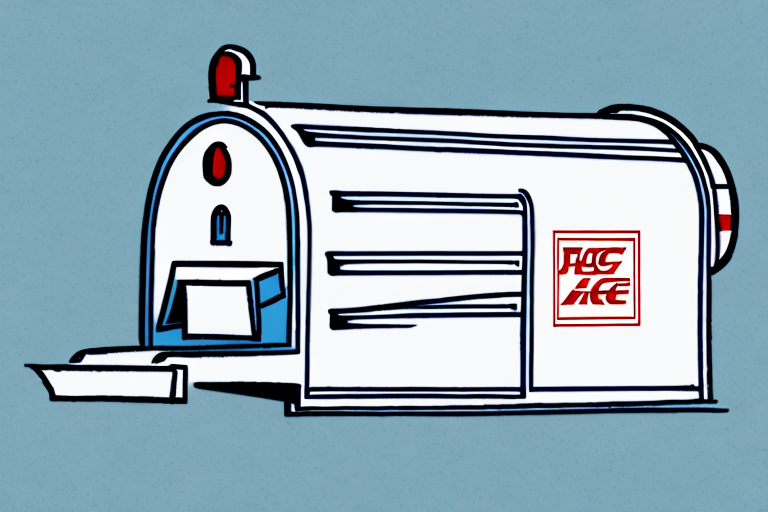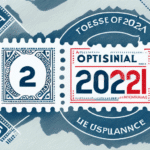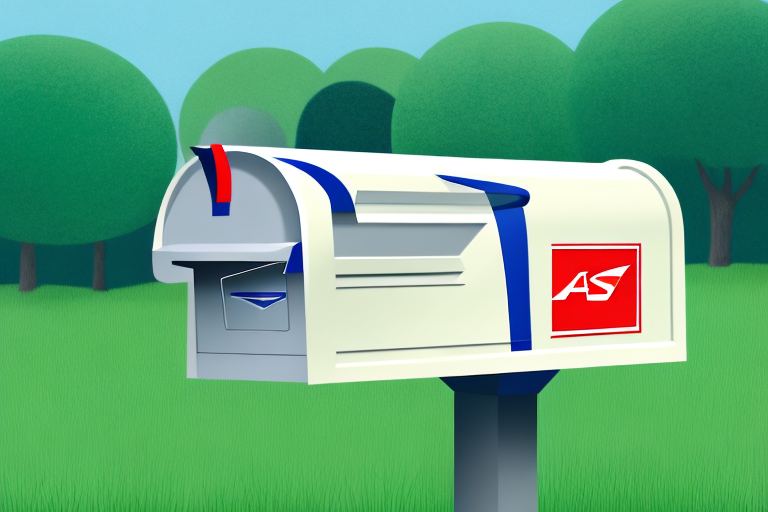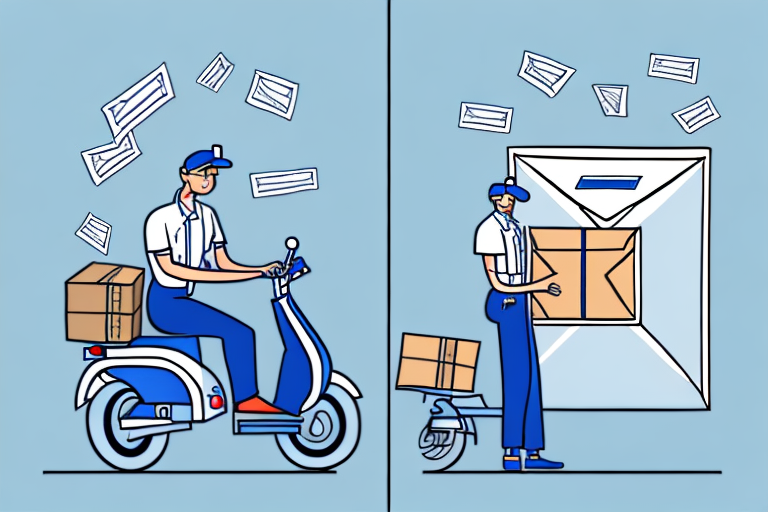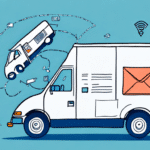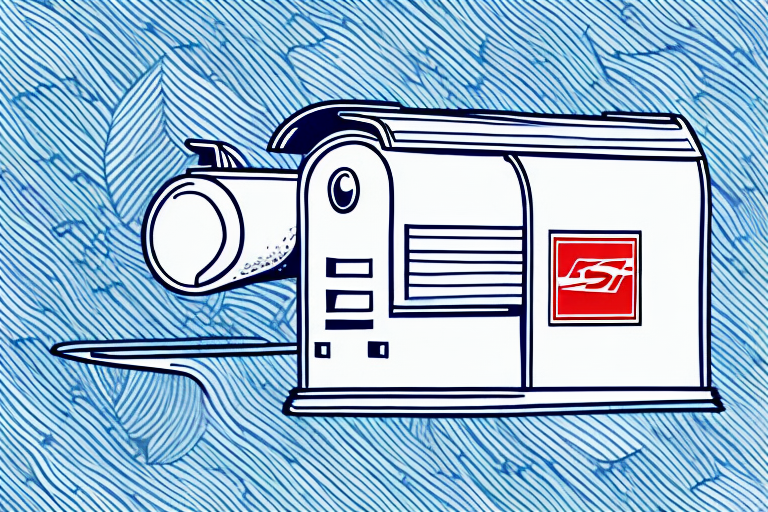What Is the First Class Postage Rate for 2023?
The United States Postal Service (USPS) has announced the new rates for 2023, which include an updated first class postage rate. In this article, we will discuss the first class postage rate for 2023, the basics of postage rates in the US, a historical overview of first class postage rates, factors that affect the rate, how the rate is calculated, comparisons with other mail classes, tips for saving money, stamp and label buying, the impact of technology, and future predictions and trends.
Understanding the Basics of Postage Rates in the US
Postage rates in the US are determined by the USPS, a government agency responsible for delivering mail and packages across the country. The USPS operates as a self-sufficient entity, covering its operational costs through the sale of products and services, including postage stamps and mailing supplies. Rates are influenced by various factors such as labor costs, transportation expenses, and material costs. Additionally, the USPS considers demand for its services, competition from other delivery services, and advancements in technology and changes in consumer behavior.
Postage rates vary depending on the type of mail being sent. For example, first-class mail, which includes letters and postcards, has a different rate than standard mail, which covers flyers and advertisements. Furthermore, the USPS offers discounts and promotions for businesses and bulk mailings. Understanding these different rates and options is essential for saving money and ensuring timely delivery of your mail.
Historical Overview of First Class Postage Rates in the US
First class postage rates have steadily increased over the years due to various economic and operational factors. In 1971, the rate was 8 cents for up to one ounce of mail, and it has consistently risen since then. By 2023, the rate for a one-ounce letter has increased to 63 cents.
One of the primary reasons for the increase in first class postage rates is the decline in mail volume. The rise of digital communication has led to fewer people sending letters and other physical mail, resulting in reduced revenue for the USPS. Additionally, the USPS faces financial challenges, including the obligation to pre-fund retiree health benefits, which contributes to the need for rate increases.
Despite these challenges, the USPS continues to provide essential services to millions of Americans. Beyond mail delivery, the USPS offers a range of services, including package delivery, passport applications, and money orders. The USPS remains a vital component of the country's infrastructure, relied upon by individuals, businesses, and government agencies alike.
Factors That Affect First Class Postage Rates in the US
Several factors influence the first class postage rate, including:
- Inflation: General economic inflation affects the costs of operations, leading to rate adjustments.
- Labor Costs: Wages and benefits for USPS employees contribute to overall operational expenses.
- Transportation Costs: Fuel prices and maintenance of delivery vehicles impact the cost of mail delivery.
- Energy Prices: Energy costs for running facilities and equipment also play a role.
- Cost of Materials: Paper, ink, and other materials needed for mail processing and delivery.
- Postal Regulations: Changes in postal laws and regulations can affect pricing structures.
- Consumer Demand: Fluctuations in mail volume, influenced by digital communication trends.
When mail volume decreases, the USPS may increase postage rates to compensate for revenue loss. Conversely, an increase in mail volume can potentially allow for lower postage rates due to higher revenue from volume.
How Are First Class Postage Rates Calculated for 2023?
The USPS calculates first class postage rates by considering the factors mentioned above, along with current economic conditions and future projections. For 2023, the first class postage rate for a one-ounce letter has increased to 63 cents, marking an increase from the previous rate of 58 cents in 2022.
This rate hike is attributed to rising costs in transportation, labor, and materials. Additionally, ongoing financial challenges within the USPS necessitate adjustments in postage rates to maintain service quality and operational sustainability. Despite the increase, first class postage rates in the United States remain competitive on a global scale.
For the most accurate and up-to-date information on postal rates, refer to the official USPS website.
Comparison Between First Class Postage Rates and Other Mail Classes
First class mail is one of several mail classes offered by the USPS, each with different delivery standards, pricing, and restrictions:
- Priority Mail: Offers faster delivery within 1-3 business days.
- First-Class Package Service: Suitable for packages with varying sizes and weights.
- Media Mail: A cost-effective option for shipping books, films, and educational materials.
- Standard Mail: Ideal for sending flyers, advertisements, and bulk mailings at a lower cost.
First class postage rates are determined by the weight and size of the mailpiece, as well as the distance it needs to travel. The USPS also offers additional services for first class mail, such as certified mail, which provides proof of mailing and delivery, and return receipt, which offers proof of delivery. These services incur additional costs but are beneficial for important or valuable mailings.
How to Save Money on First Class Postage in 2023
Here are several strategies to save money on first class postage in 2023:
- Use Online Postage Providers: Purchasing postage online can offer discounted rates compared to buying stamps at the post office.
- Send Mail in Bulk: Bulk mailings often qualify for lower postage rates.
- Utilize Free Mailing Supplies: The USPS provides free boxes and envelopes, which can reduce shipping costs.
- Choose the Right Mail Class: Understanding the different mail classes and selecting the most cost-effective option for your needs can lead to significant savings.
Additionally, consider alternative mailing options:
- Standard Mail: Opt for standard mail if your mail is not time-sensitive, as it is typically cheaper than first class mail.
- Alternative Carriers: Explore services from carriers like FedEx or UPS, which may offer competitive rates for specific types of mail.
- Electronic Communication: Utilize email or online messaging to eliminate the need for physical postage altogether.
Tips for Buying Stamps and Printing Labels for First Class Mail
When purchasing stamps for first class mail, consider the following tips to save money and streamline the mailing process:
- Buy in Bulk: Purchasing stamps in bulk can offer cost savings compared to buying smaller quantities.
- Use Online Stamps: Buying stamps online can provide convenience and sometimes discounts.
- Print Postage Labels: Many online postage providers offer the option to print postage labels, saving time and simplifying the mailing process. Ensure that labels are properly formatted and use clear, easy-to-read fonts to avoid errors and delivery delays.
Before sending your package or envelope, verify the weight and size restrictions for first class mail. Exceeding these limits may require a different shipping method or additional fees. This information is available on the USPS website or by consulting with a postal worker.
Impact of Technology on First Class Mail and Postage Rates
Technology has significantly transformed communication and business operations, impacting first class mail and postage rates in several ways:
- Digital Communication: The rise of email and texting has reduced the demand for traditional mail delivery, influencing postal rate adjustments.
- Operational Efficiency: Automation and streamlined processes have enabled the USPS to operate more efficiently, potentially reducing costs.
- E-commerce Growth: The surge in online shopping has increased package delivery services, necessitating operational adjustments by the USPS.
- Innovative Delivery Methods: Emerging technologies like drone delivery and self-driving vehicles could further disrupt the postal industry and affect first class mail and postage rates.
As technology continues to evolve, the future of first class mail and postage rates remains an area of ongoing discussion and uncertainty.
Future Trends and Predictions for First Class Postage Rates in the US
Predicting the future of first class postage rates involves considering several trends:
- Declining Demand for Traditional Mail: The continued rise of digital communication may further decrease demand for physical mail, impacting USPS revenues and rate structures.
- Digital Communication: As more consumers prefer electronic communication, the USPS may need to adapt its services and pricing accordingly.
- E-commerce Expansion: The growth of online shopping will likely increase the demand for package delivery, influencing USPS operations and pricing for both packages and traditional mail.
- Sustainability and Environmental Responsibility: Increasing consumer awareness of environmental impacts may drive demand for more eco-friendly mailing options, potentially affecting USPS operations and pricing.
- Regulatory Changes: Being a government agency, the USPS is subject to regulatory changes that could alter its funding and operational frameworks, directly impacting postage rates.
The USPS is actively seeking ways to adapt to these changing conditions through modernization and innovation, which may present new opportunities for growth and improved services.
Conclusion
The first class postage rate for 2023 is set at 63 cents. This article has explored the fundamentals of postage rates in the US, provided a historical perspective on first class postage rates, examined the factors influencing these rates, detailed the calculation methods for 2023, compared first class mail with other mail classes, offered money-saving tips, discussed stamp and label purchasing strategies, analyzed the impact of technology, and looked ahead to future trends and predictions.
Understanding the factors that influence postage rates and utilizing money-saving strategies can help individuals and businesses effectively manage their mailing costs while benefiting from USPS services.
The USPS continues to face financial challenges, including declining mail volumes and increasing competition from digital communication. These challenges have sparked discussions about potential changes to the postal service, such as privatization or restructuring. However, the USPS remains an essential service for many Americans, particularly those in rural areas or without reliable internet access.
Moreover, the COVID-19 pandemic has significantly impacted the postal service, with increased demand for package delivery and heightened safety concerns for postal workers. In response, the USPS has implemented measures like contactless delivery and enhanced cleaning protocols to address these challenges. As the world continues to navigate the pandemic, the USPS is likely to maintain its crucial role in delivering essential goods and services.
For more information on current USPS rates and services, visit the official USPS website.



